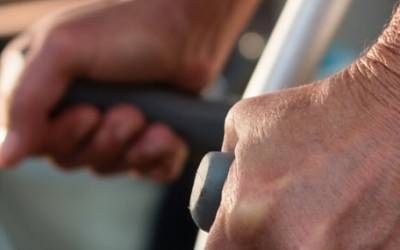Call 1800 641 743 for a free first interview. Ask about our No Win No Fee OR Expenses* fee policy.
Published: 02 February 2018
Author:
Ryan Carlisle Thomas
The top 5 things cyclists want drivers to know
It’s the perfect time of year in Victoria for a bike ride, which means there are more bikes on the roads and motorists are encouraged to be extra cautious.
Bicycles were invented in 1817 and there has been a code of conduct for cyclists since the early 1800s. However, recent research and personal experience shows that cyclists are increasingly exposed to serious accidents.
As I rode the beautiful roads of country Victoria recently, I had an interesting conversation with my cyclist friends where we agreed there are five things that cyclists desperately want car drivers to understand in order to increase safety for cyclists and motorists alike on our roads.
- Bikes can move very fast. Even novice riders can travel at 25km/h and more experienced riders travel upwards of 40 km/h. All cyclists travel considerably more than this when travelling downhill and regularly reaching speeds of 60km or more an hour. This speed means that when a cyclist falls they are likely to suffer injury, so motorists need to take care and respect bikes as a co user of our roads. Extra patience is also required by motorists when bikes are traveling slowly up hill. Please pass only when it is safe
- A combination of helmet, wind conditions and concentration mean that cyclists can't always hear motorists when travelling from behind. This means it’s safest to assume the rider doesn’t know you're there and to ensure a wide berth
- If cyclists ride in the middle of the lane it's generally to prevent injury in the case of fast moving traffic or in case anyone opens their car door without checking first. It is also necessary for cyclists to avoid rough shoulders, pot holes or gravel which are all dangerous to cyclists. If cyclists are in the middle of the road motorists should consider they probably have a good reason and are avoiding a potential hazard
- Cyclists often have partners and children who want to see them get home safely. Next time you plan to pass a cyclist by car, remember that a few seconds lost won't kill you, but trying to get past might seriously injure or kill them
- Cyclists are likely to react with anger if a motorist cuts them off or drives too close, as this can be a frightening experience that may mean the difference between getting home safely or not.
It’s worth noting that many cyclists are also motorists and choose to ride because it makes practical and environmental sense when the roads are choked with cars.
Why should we all care that cycling accidents are increasing?
In September 2017, the Medical Journal of Australia published a study that investigated deaths and serious injuries after traffic crashes in Victoria from 2007 to 2015. The results are confronting.
- There were 10,092 road traffic deaths and serious injuries over the course of the study. This included 8066 hospitalised road traffic major trauma cases and 2588 road traffic fatalities in Victoria.
- The estimated health costs associated with these road traffic injuries was more than $14 billion.
- The rise in serious injury rates in cyclists, increased 8 per cent a year and actually doubled over the nine-year study period.
- These injuries are often severe, including head injuries, spine injuries and fractures of the pelvis and limbs and can often lead to significant disability.
- Over the course of the study, health costs for cyclists were more than $700 million.
As lawyers working with clients who have experienced road trauma and personal injury, we see the harsh reality of these brutal statistics on a daily basis when clients seek compensation and assistance to manage life with serious injuries.
What specific laws apply to cyclists?
Cyclists are required to obey the same road rules as drivers, and they are required by law to wear a helmet and to ride only two abreast.
For legal counsel related to cycling related injuries, please contact Stringer Clark at https://stringerclark.com.au/contact or on 1300 366 441.
Categories TAC, Cycling, Road injury
Call 1800 641 743 to be connected to your nearest office, find an office near you on our office locations map, or email us using the form below and we will contact you on the same or next business day.
* Required Field



